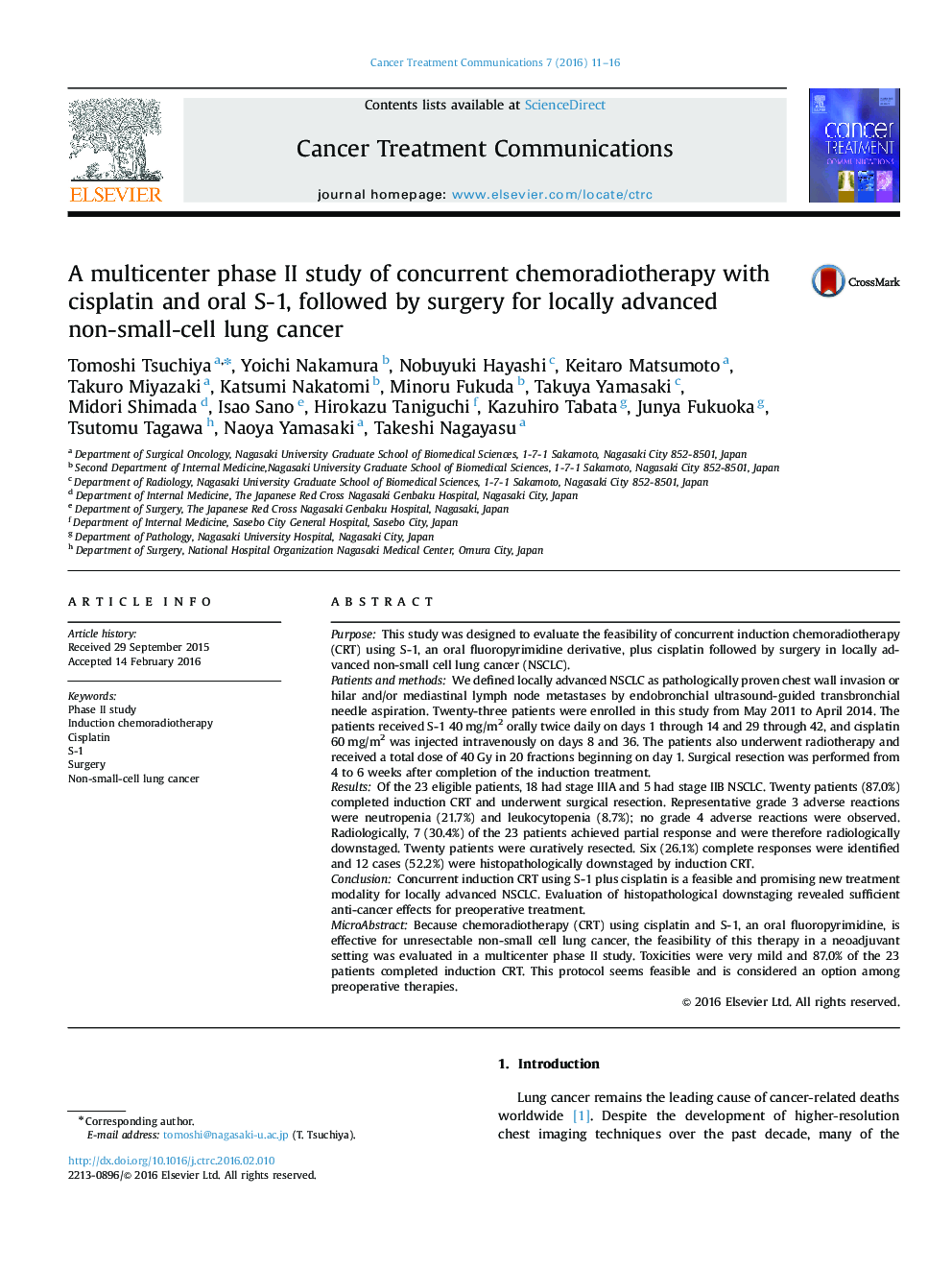| Article ID | Journal | Published Year | Pages | File Type |
|---|---|---|---|---|
| 6190192 | Cancer Treatment Communications | 2016 | 6 Pages |
PurposeThis study was designed to evaluate the feasibility of concurrent induction chemoradiotherapy (CRT) using S-1, an oral fluoropyrimidine derivative, plus cisplatin followed by surgery in locally advanced non-small cell lung cancer (NSCLC).Patients and methodsWe defined locally advanced NSCLC as pathologically proven chest wall invasion or hilar and/or mediastinal lymph node metastases by endobronchial ultrasound-guided transbronchial needle aspiration. Twenty-three patients were enrolled in this study from May 2011 to April 2014. The patients received S-1 40Â mg/m2 orally twice daily on days 1 through 14 and 29 through 42, and cisplatin 60Â mg/m2 was injected intravenously on days 8 and 36. The patients also underwent radiotherapy and received a total dose of 40Â Gy in 20 fractions beginning on day 1. Surgical resection was performed from 4 to 6 weeks after completion of the induction treatment.ResultsOf the 23 eligible patients, 18 had stage IIIA and 5 had stage IIB NSCLC. Twenty patients (87.0%) completed induction CRT and underwent surgical resection. Representative grade 3 adverse reactions were neutropenia (21.7%) and leukocytopenia (8.7%); no grade 4 adverse reactions were observed. Radiologically, 7 (30.4%) of the 23 patients achieved partial response and were therefore radiologically downstaged. Twenty patients were curatively resected. Six (26.1%) complete responses were identified and 12 cases (52.2%) were histopathologically downstaged by induction CRT.ConclusionConcurrent induction CRT using S-1 plus cisplatin is a feasible and promising new treatment modality for locally advanced NSCLC. Evaluation of histopathological downstaging revealed sufficient anti-cancer effects for preoperative treatment.MicroAbstractBecause chemoradiotherapy (CRT) using cisplatin and S-1, an oral fluoropyrimidine, is effective for unresectable non-small cell lung cancer, the feasibility of this therapy in a neoadjuvant setting was evaluated in a multicenter phase II study. Toxicities were very mild and 87.0% of the 23 patients completed induction CRT. This protocol seems feasible and is considered an option among preoperative therapies.
